If you’ve been following the stories in the media, you’ll know that there are big changes happening in the energy industry.
It’s been reported that energy prices are set to rise and there will be large-scale ‘blackouts’ caused by impending energy shortages. (See updated news reports on the gas shortages at end of this article)
Australia is reaching a pivotal point in the transition from old outdated fossil fuels to cleaner, greener energy sources, which poses some issues because over many years Governments have lacked clarity, foresight and strong leadership on this issue.
It’s a complex area and the process of transition and lack of policy has undoubtedly contributed to issues we’re now facing regarding wholesale pricing, retail pricing and the future of our power supply.
This debate is highly complex so in this and a series of related articles Enova is sticking to the facts – what you need to know and how you’re likely to be affected.
Prices are rising
There are systemic issues complicating the discussion beyond energy resource management, although the bottom line is that prices are rising, – wholesale electricity prices (the price your electricity retailer pays to access electricity on your behalf) have been increasing for some time now.
So far, retailers have been able to protect consumers by absorbing these increases – wholesale energy prices that have nearly tripled over the past twelve months. But this cannot remain the case for much longer. In July, most retailers are expected to pass these increases through to customer which means electricity prices could rise by as much as 20%.
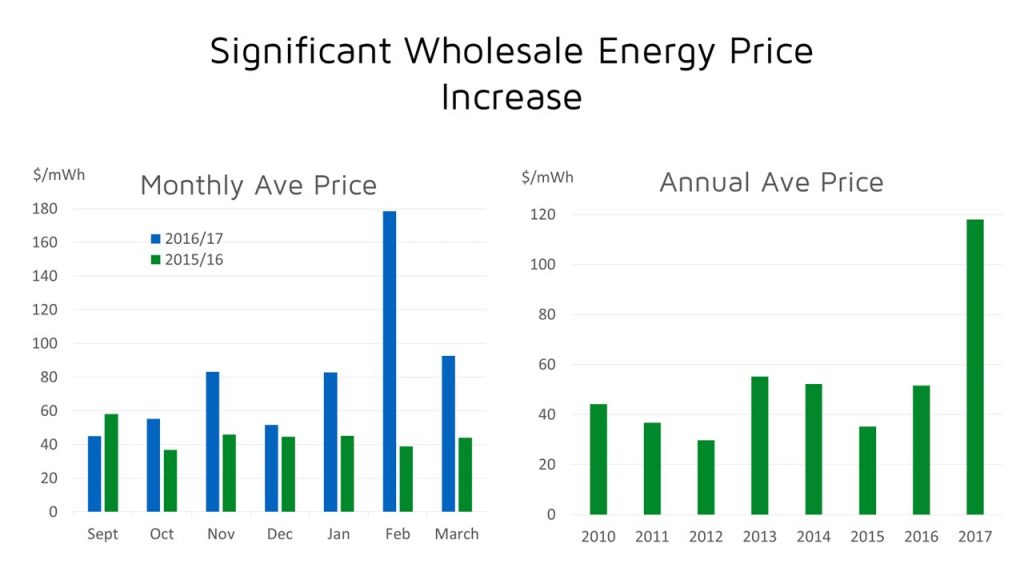
Will electricity bills go up?
Unfortunately, the short answer is ‘Yes’. It is unlikely that prices will return to previous low levels in the short to medium term. In fact, we are predicting as much as a 20% increase over the coming months by all retailers. This also depends on changes in network charges. At the moment, we are assuming they will remain the same.
How much retailers will pass onto consumers remains to be seen, but consumers need to brace themselves for industry wide price hikes that cannot be avoided.
Why are prices rising?
There’s no one single (or simple) answer to this question. The way the Australian wholesale electricity market operates means that Australian wholesale electricity is one of the most volatile commodities in the world and this has a lot to do with it.
Electricity Price and Demand Example
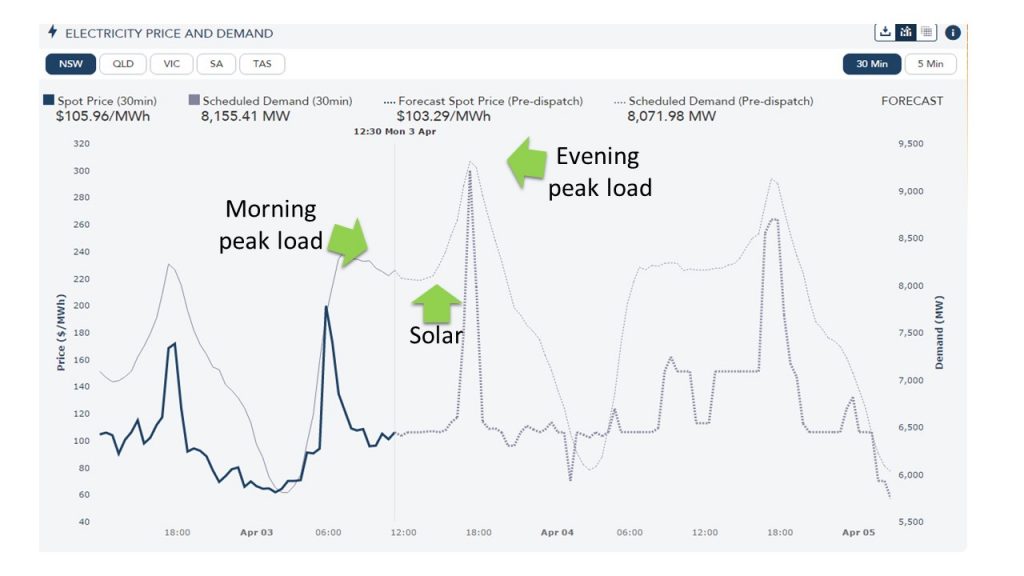
The cost to supply electricity is set initially by generators bidding in a price every half an hour, which is heavily influenced by market supply (Generators available to be called on to operate) and demand, which is high during the during hot summer days.
Energy Generator Bidding Example

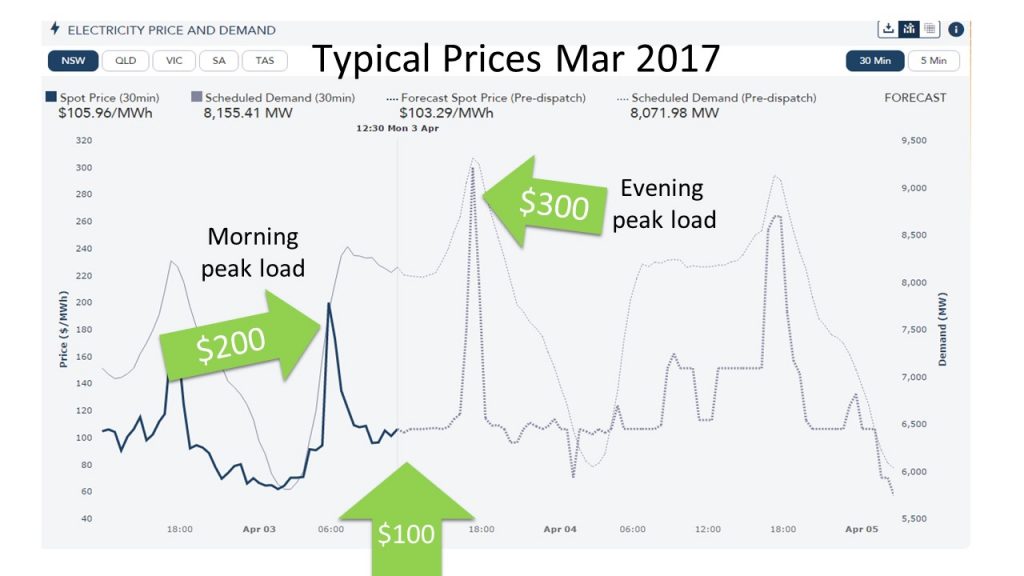
The demand was very high during the extremely hot summer days we experienced earlier this year, the price of electricity went up 230 times higher than average. It peaked at $14,200 per megawatt – the ceiling price.
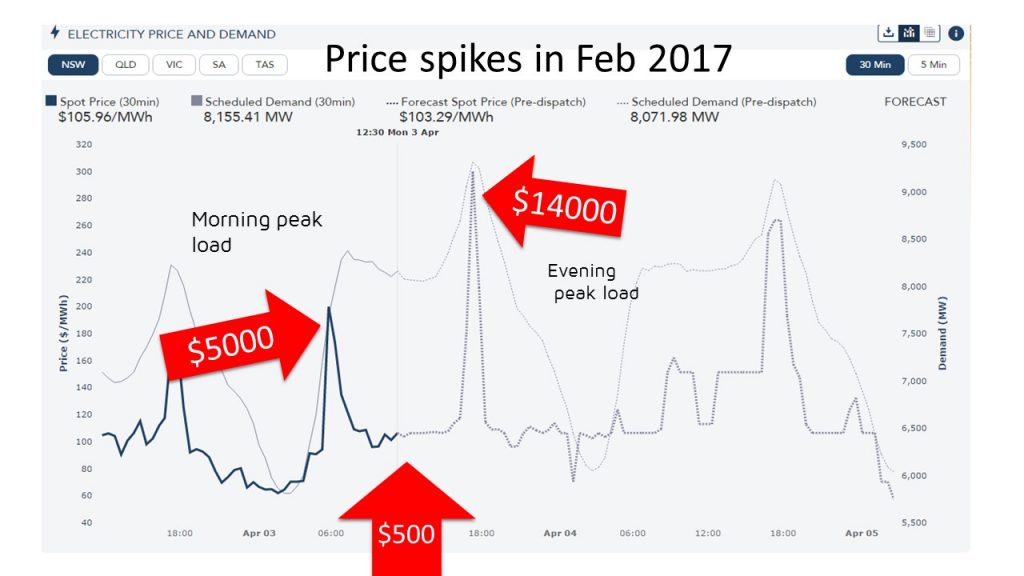
Retailers like Enova pay this wholesale price. To protect ourselves and our customers from these largely unpredictable price spikes, retailers purchase a ‘hedge’ that, in turn, protects us financially.
A hedge is like insurance and sets a maximum price that a retailer is exposed to.
How and when generators bid into the market also predicts supply prices, and it’s been widely known in the industry for a long time that a certain amount of ‘gaming’ goes on which drives prices up – which under current market rules is completely legal, even though it’s not in the best interests of the consumer.
However, now that the market operator, AEMO has a new CEO and within the remits of the ACCC investigation that’s been instigated by Prime Minister Malcolm Turnbull some of these aspects of the wholesale market may be investigated and hopefully we’ll see a tightening of the regulations so that the consumer is better protected.
On top of what we pay for electricity, retailers like Enova Energy add a margin to cover operating costs and make a profit.
Of your total bill the actual cost of electricity makes up about a quarter.
Are grid and network costs reasonable?
For the past few years, the cost of maintaining aging infrastructure has been cited as the main reason for price hikes. In your electricity bill, you pay costs for distribution (network charges) and they’re charged to your electricity retailer by the company that manages the poles and wires.
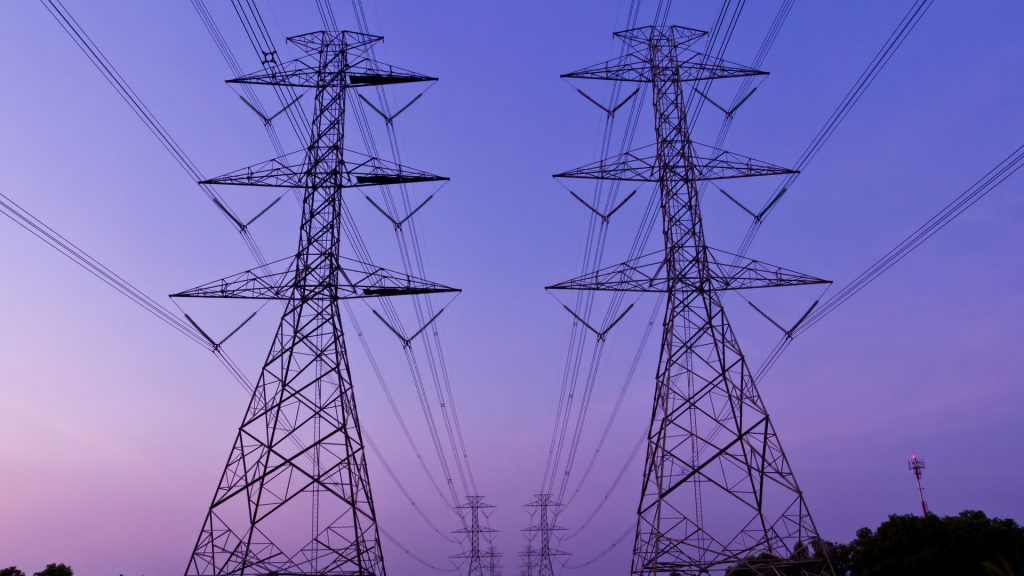
The return on the assets that networks can earn are highly regulated by the Australian Energy Regulator (AER) and these then translate into network fees. These fees are passed onto you and typically account for around half of the final total of your bill.
Finally, the remaining balance is made up of other environmental charges such as Australian and state and territory government-based environmental programs including those aimed at increasing renewable electricity generation.

NOTE: recent reports suggest these shortages may not cause a great crisis after all.


